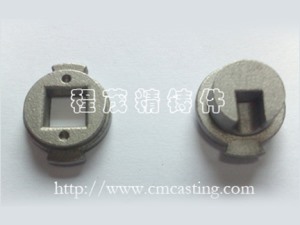At present, most of the products in the development of this society are all made of robot stainless steel parts. However, when it comes to the process of surface processing of robot stainless steel parts, it is very likely that everyone is not too clear. Robot stainless steel parts processing is a more common type of processing. Processing technology, according to the development trend of contemporary production technologyThe product will not produce mildew and rust under long-term application. The common electroplating process processing includes some hardware parts such as screws, metal stamping parts, battery pieces, car parts, and decorations.

Baking and spray painting processing robot stainless steel parts factory in the production of large-scale hardware products have selected baking and spraying processing, according to the baking paint and spraying processing to prevent the hardware from rusting. Surface grinding and polishing are generally more commonly used in daily necessities, and some products sometimes have small burrs when they are manufactured, because then everyone will also carry out surface burrs treatment on hardware products. The CNC blade is simple, easy to manufacture, grind and install; the whole drilling process is stable, and the cutting speed is small. It is beneficial to select high cutting parameters and improve production efficiency; the machine tool is practical and canProcess the outer circle, inner hole, inner thread, outer thread and chamfer in one clamping. The precision of the mutual parts in the middle of each surface. Turning the external surface is the basic method of external surface processing in hardware processing, Commonly used machinery and equipment is a lathe. In general foundries, lathes account for the total number of machine tools40%up and down. Turning is the key method for roughing and semi-finishing the outer surface of various raw materials , But also some of the final high-precision machining methods for various raw materials that are not suitable for cutting.
Related News
- Precision casting mirror treatment and dewaxing casting
- Controlling the high quality of precision cast steel is the key
- Production Development of Guangdong Stainless Steel Casting Alloy Steel
- Characteristics of precision cast steel investment casting
- Dongguan precision casting kitchen hardware pendant varieties
- Processing steps and cleaning methods of Guangdong stainless steel castings
- Definition of Guangdong carbon steel casting
- Classification of Dongguan Precision Casting Special Casting
- Dongguan Precision Casting Factory
- What are the types of alloy steel casting hardware in Guangdong
- About the advantages of dewaxing precision castings at this stage
- Summarize the contrast between carbon steel and stainless steel
- The relationship between 3D printing process and precision castings
- Briefly describe the precision castings that are closely related to us
- The good points of Dongguan precision casting
- Brief description of robot stainless steel accessories and 304 stainless steel
- The development of precision cast steel at this stage
- Solutions to Difficulties in Casting in Alloy Steel Foundry
- Compare the cutting performance strength of carbon steel and stainless steel blades
- Dongguan precision casting precision regulations and cost fees
